Solacon (1958 Worldcon) Program Book
At 56 half-size pages, not counting the covers, the Solacon program book lacks the heft and pretensions of the volumes issued by modern conventions. On the other hand, it does have a feature that one never sees in the Worldcon program book these days: the convention program.
|
Front cover of the Solacon Program Book
|
|
Solacon Program Book, inside front cover
|
The program back then could comfortably fit into four pages, one for each day. Friday's is shown below:
Saturday offered no heavier burden:
Sunday, by contrast, was busy, with the WSFS business meeting, the banquet, the masquerade ball and the costume parade (judged by A. E. van Vogt, Fritz Lieber and Bjo (not yet Trimble)).
Monday, on the other hand, was technically not part of Solacon at all. The Worldcon was combined this year with the Westercon, which held its program and business meeting on Labor Day. Programming consisted Bjo's presentation, "Fashions of the Future", "a panel of feminine SF writers" (ominously titled "The Lysistrata Theme in Modern Science Fiction") and a play by Karen Anderson.
One task of the Worldcon business meeting was to select the site of the 1959 Worldcon. Judging by the program book, the race, between Detroit and Chicago, was vigorously contested. There were ads from the bid committees, of course, such as this rather negatively phrased one from Chicago:
. . . and this less strident pitch from the sponsors of the Detroit bid:
But there were also endorsements by organizations, individual fans and even publishers. Both Advent:Publishers and Gnome Press included "Vote for Chicago" lines in their ads, while Infinity Science Fiction cheered on Detroit. Clubs were vocal on both sides. Advertising in support of the Motor City were the Cincinnati Fantasy Group, the Seattle Nameless and the Lunarians, while Chicago received the backing of the University of Chicago Science Fiction Club, Greater St. Louis Fandom and Milwaukee Fandom (which also plugged a Milwaukee in '73 bid - is this the secret origin of the immortal Minneapolis in '73?). Individuals also took out ads. One pro-Chicago ad consisted of 16 supporters' signatures. Countering it a few pages later was a list of 14 Indiana fans for Detroit (and also for "Indianapolis in '63", which sounds like a truly forlorn hope).
The ads preserve a bit of fanhistorical trivia. It is evident that George Young was supposed to chair the Detroit Worldcon. Several ads, including one signed by George himself and Fred Prophet, exhorted fandom to "Let George Do It". The business meeting agreed with that sentiment, choosing Detroit over Chicago, but Detention was in fact chaired by Fred Prophet and Roger Sims. There presumably is a story behind the change in leadership, but I don't know what it was.
Solacon had another political side, for it fell during the short lifespan of the incorporated World Science Fiction Society. The program book includes the corporate by-laws, as well as ads for candidates for the WSFS board of directors. The general feeling of fandom was, however, that incorporation had been a mistake. The business meeting recommended that the corporation be dissolved, and the board of directors complied a few months thereafter.
One factor that led to the disincorporation of WSFS was an acrimonious financial dispute left over from the 1957 Worldcon in London. Those who are interested in the details can find them in Harry Warner's A Wealth of Fable. What is worth noting here is that the program book contains Loncon's cash flow report, which certainly does not resemble Chicon 2000's!
RECEIPTS
|
EXPENDITURES
|
Balance from 1956 Worldcon
|
£10 18s. 11d.
|
Publicity
|
£38 9s.
|
Sales of WSFS pins
|
£14 1s. 6d.
|
Journals
|
£130 2s. 1d.
|
Dues, 553 members
|
£280 14s.
|
Trophies
|
£37 10s.
|
Receipts from raffle
|
£5 17s. 6d.
|
Press Conference
|
£4 16s. 3d.
|
Receipts for Lunch
|
£101 5s.
|
Film
|
£14 13s.
|
Ads in Programme Booklet
|
£61 8s.
|
Transport
|
£14 11s.
|
From Airport-Coach Passengers
|
£1 1s.
|
Guest of Honor Hotel Expense
|
£8 1s.
|
For Display Tables
|
£1 10s.
|
TAFF Delegate Hotel Expense
|
£4
|
Auction
|
£55 16s. 5d.
|
Insurance
|
£7
|
Donations
|
£54 18s.
|
Baby sitter
|
£6
|
London Circle Loan
|
£33 16s. 3d.
|
Hotel
|
£191 9s.
|
 |
Programme
|
£121 13s. 5d.
|
Postage
|
£37 18s. 10d.
|
Solicitor
|
£3 13s. 6d.
|
Miscellaneous
|
£1 9s. 6d.
|
Total
|
£621 6s. 7d.
|
Total
|
£621 6s. 7d.
|

At then current exchange rates, those totals equaled $1,739.72 in U.S. funds. The two sides of the ledger look nicely balanced, but the committee pointed out its members had incurred over $150 in unreimbursed expenses and that the debt to the London Circle had not been repaid. That made it the second Worldcon in a row to lose money (doubtless the reason for the overheated warnings in the Chicago in '59 ad).
The traditional list of members' names was already a program book feature. Solacon gives full addresses, too, reflecting an era when correspondence played a major role in fanac. The roster, said to be updated to August 4th, shows 424 members. According to the "official" Worldcon list, the warm body count was 322, which is surprisingly low.
Lastly, we should not overlook the convention's Guest of Honor Richard Matheson, for whom Anthony Boucher wrote an appreciation:
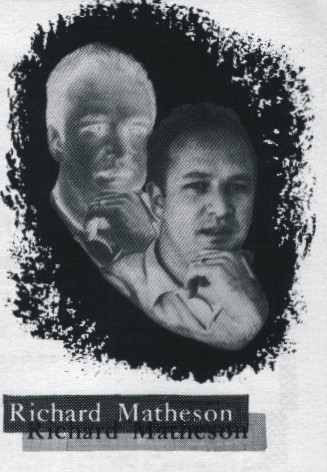 One day in November, 1949, a 23-year-old graduate of the University of Missouri’s School of Journalism, who had been trying for five unsuccessful months to see if he could get anywhere as a freelance writer, sat down in an old two-family Brooklyn house, wrote a 1200-word short-short in 40 minutes, and sent it off (God bless him!) to that brand-new publication, The Magazine of Fantasy (which was soon to add + Science Fiction to its title).
One day in November, 1949, a 23-year-old graduate of the University of Missouri’s School of Journalism, who had been trying for five unsuccessful months to see if he could get anywhere as a freelance writer, sat down in an old two-family Brooklyn house, wrote a 1200-word short-short in 40 minutes, and sent it off (God bless him!) to that brand-new publication, The Magazine of Fantasy (which was soon to add + Science Fiction to its title).
McComas and I found in the slushpile this story beginning “X - - - - This day when it had light mother called me a retch”; and our eyes popped. What was the matter with us, we asked, that we’d never heard of this Richard Matheson? Obviously a first rate professional - probably a writer in some other line experimenting with science-fantasy. And would readers, we asked ourselves further, put up with such experimental technique, or would they insist on closer adherence to familiar pulp methods? We very nearly decided (a terrifying if-crux) that the story was superb but unpublishable; but after all it took up only three pages. . . .
Those three pages were in our Summer, 1950, issue, which contained stories by Elisabeth Sanxay Holding, Cleve Cartmill, Andre Maurois, H. R. Wakefield, and A. Bertram Chandler, all pretty fair fantasy-writers. But the sensation of the issue, as every fan now knows, was Richard Matheson’s “Born of Man and Woman”. It was the most spectacularly successful of all the many notable firsts F+SF has brought forth.
Within a matter of months, Matheson had advanced from unpublished writer to author of an accepted classic.
Needless to say, matters moved more slowly after that. Stories don’t always write themselves in 40 minutes; not all stories (even good ones) sell; not all sold stories (even great ones) create much stir. But at the end of a little over a year from his first sale, Matheson had sold 13 stories, chiefly to us, to Horace Gold, and to Damon Knight.
And what’s important about those early sales, as about all Matheson stories since, is that they were widely varied in manner and matter, yet all recognizably Mathesonian - never just-another-commercial-story that might carry any by-line at all.
Matheson has gone on to many types of writing - crime novels, paperback s.f., stories for magazines outside our field (especially Playboy), films - and all his work is marked by the same integrity, the same ability to retain individuality while filling the needs of a market.
And what is the most striking characteristic of this Matheson individuality? It is that, as Robert Bloch has written, “Matheson gets closer to his characters than anyone else in the field of fantasy today. . . . You don’t read a Matheson story - you experience it.”
He has many other virtues, notably an unusual agility in trick prose and trick construction and a too-little-recognized (or exercised) skill on offtrail humor; but his great strength is his power to take a reader inside a character or a situation.
On its more realistic level, this power can be verified. In “Old Haunts” Matheson wrote from the inside about middle age. In “The Test” he described an agonizing parent-child relation which he has never experienced. In each case, I know that his projection from within is so painfully real and true that I believe him unquestioningly when be shows what is inside an amorous Venus girl or an involuntary telepath or a mutant who drips green.
How Matheson knows these things could itself be the subject for a Matheson story. I’ve no idea how it’s done; but believe me, he knows.
Listen to him.
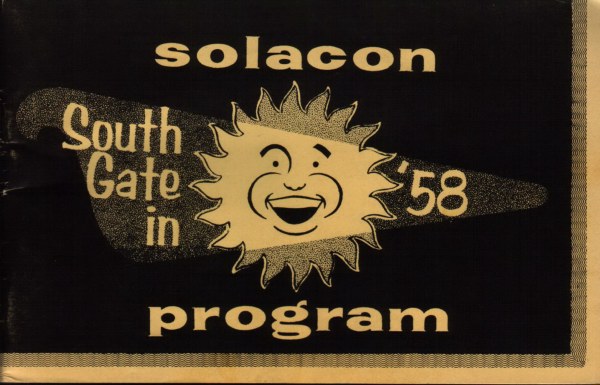
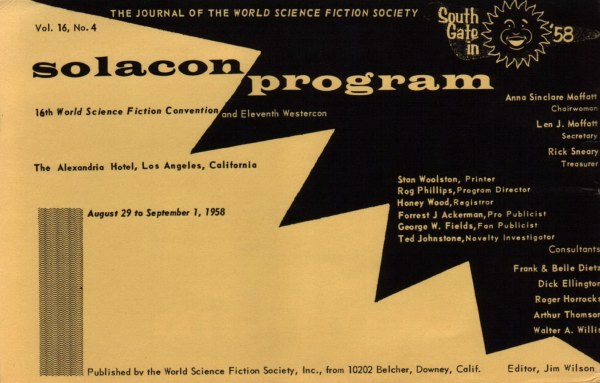
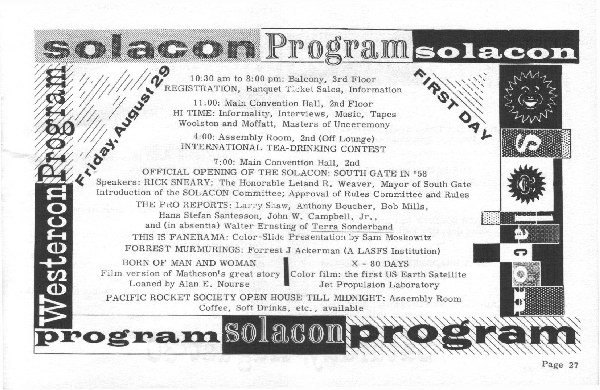
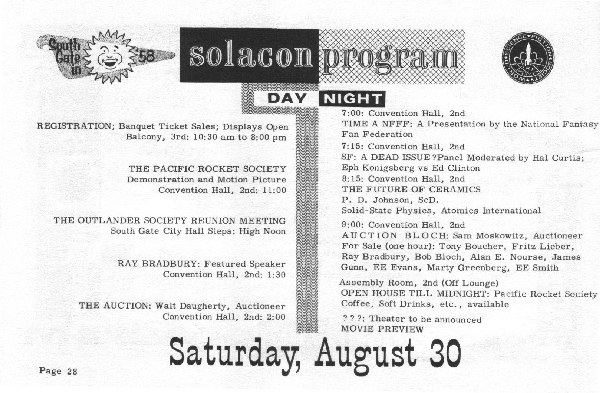

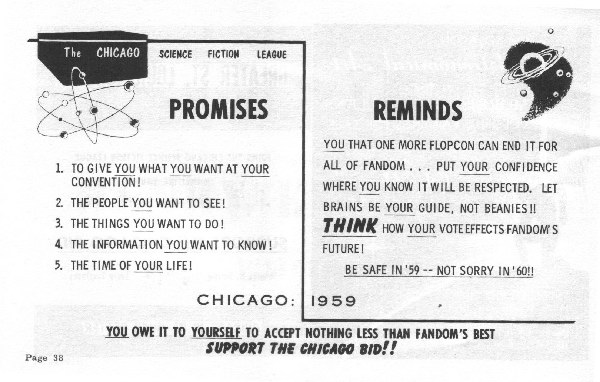
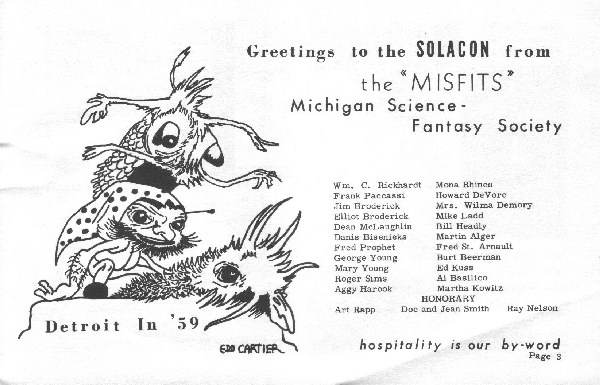
 One day in November, 1949, a 23-year-old graduate of the University of Missouri’s School of Journalism, who had been trying for five unsuccessful months to see if he could get anywhere as a freelance writer, sat down in an old two-family Brooklyn house, wrote a 1200-word short-short in 40 minutes, and sent it off (God bless him!) to that brand-new publication, The Magazine of Fantasy (which was soon to add + Science Fiction to its title).
One day in November, 1949, a 23-year-old graduate of the University of Missouri’s School of Journalism, who had been trying for five unsuccessful months to see if he could get anywhere as a freelance writer, sat down in an old two-family Brooklyn house, wrote a 1200-word short-short in 40 minutes, and sent it off (God bless him!) to that brand-new publication, The Magazine of Fantasy (which was soon to add + Science Fiction to its title).